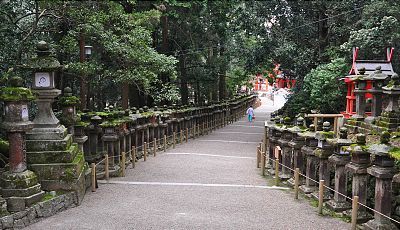
The Kasuga Grand Shrine also known as the Kasuga Taisha is a popular Shinto shrine that can be found in the prefecture of Nara. The shrine has become increasingly popular to tourists and even the locals of Japan because of its breathtaking bronze and stone lanterns accessorizing almost all areas of the temple. The place is located at the far end, northeast of Nara Park and is just a 20-25 minute short walk from Toda-ji. The shrine is considered as one of the most valuable shrines in Nara prefecture and is a member of the Three Great Shrines in the whole of Japan.
Officially built by the Fujiwara clan on 768, it has been rebuilt countless times during the many centuries that passed. However, despite of the reconstructions, it is still considered as the official shrine of the family of the Fujiwaras. The Fujiwaras were one of the most powerful families during the ancient period and they used the shrine together with the Imperial court as worship place. This made the history of the place to be known as filled with prosperity from the people living there. The style of architecture was called as the Taisha-zukuri or Kasuga-zukuri where the name Kasuga Grand Shrine was originally derived. The place can be seen in the western part of Mt. Kasuga and Mt. Mikasa, which are considered as sacred mountains where the Shinto kamis or gods first descended to earth.
During the middle of the later Heian period, the Kasuga Grand Shrine was merged with the Kofukuji Temple in response to the then newly emerged Kami-Buddha Fusion of theological philosophy. This merging with the Kofukuji, however, only lasted until the Meiji restoration, which is a time when the government of the country ordered Shinto to be the religion of the whole state, separating it from Shintoism and Buddhism. Near the shrine is the Kasugayama Primeval Forest, which is one the Historic Monuments of Ancient Nara as well as a member of UNESCO’s World Heritage Site.
Kasuga Shrine

No comments:
Post a Comment
Feel free to place you thoughts here